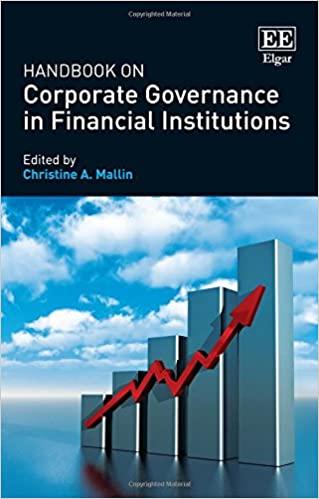Jack Tar. CFO of Sheetbend & Halyard, Inc., opened the company-confidential envelope. It contained a draft of a competitive bid for a contract to supply duffel canvas to the U.S. Navy. The cover memo from Sheetbend's CEO asked Mr. Tar to review the bid before it was submitted. The bid and its supporting documents had been prepared by Sheetbend's sales staff. It called for Sheetbend to supply 100,000 yards of duffel canvas per year for 5 years. The proposed selling price was fixed at $30 per yard. Mr. Tar was not usually involved in sales, but this bid was unusual in at least two respects. First, if accepted by the navy, it would commit Sheetbend to a fixed price, long-term contract. Second, producing the duffel canvas would require an investment of $1.5 million to purchase machinery and to refurbish Sheetbend's plant in Pleasantboro, Maine. Mr. Tar set to work and by the end of the week had collected the following facts and assumptions: The plant in Pleasantboro had been built in the early 1900s and is now idle. The plant was fully depreciated on Sheetbend's books, except for the purchase cost of the land of $10,000. The current value of the land and plant was negligible. However, after refurbishing the plant, both could be sold for $600,000 at the end of year five. Refurbishing the plant would cost $500,000. This investment would be depreciated for tax purposes on the 10-year MACRS schedule. The new machinery would cost $1 million. This investment could be depreciated on the 5-year MACRS schedule. The refurbished plant and new machinery would last for many years. However, the remaining market for duffel canvas was small, and it was not clear that additional orders can be obtained once the navy contract was finished. The machinery was custom built and could be used only for duffel canvas. Its second- hand value at the end of 5 years should be no more than $30,000. The sale's staff forecasts included the following: Cost of goods sold would include a fixed cost of $300,000 per year plus variable costs of $18 per yard. Costs are expected to increase at the inflation rate of 4% per year. Mr. Tar reviewed these forecasts and decided that they were reasonable. While the forecasts contained no mention of net working capital, Mr. Tar thought that it uld require an initial $300,000 investment and average about 10% of sales over the next five years. Given the above forecasts and assumptions, Mr. Tar constructed a spreadsheet to calculate the NPV of the duffel canvas project, assuming that Sheetbend's bid would be accepted by navy. Should Mr. Tar recommend submitting the bid to the navy at the proposed price of $30 per yard? The marginal tax rate for Sheetbend is 35% and the discount rate for this project is 12 percent. Jack Tar. CFO of Sheetbend & Halyard, Inc., opened the company-confidential envelope. It contained a draft of a competitive bid for a contract to supply duffel canvas to the U.S. Navy. The cover memo from Sheetbend's CEO asked Mr. Tar to review the bid before it was submitted. The bid and its supporting documents had been prepared by Sheetbend's sales staff. It called for Sheetbend to supply 100,000 yards of duffel canvas per year for 5 years. The proposed selling price was fixed at $30 per yard. Mr. Tar was not usually involved in sales, but this bid was unusual in at least two respects. First, if accepted by the navy, it would commit Sheetbend to a fixed price, long-term contract. Second, producing the duffel canvas would require an investment of $1.5 million to purchase machinery and to refurbish Sheetbend's plant in Pleasantboro, Maine. Mr. Tar set to work and by the end of the week had collected the following facts and assumptions: The plant in Pleasantboro had been built in the early 1900s and is now idle. The plant was fully depreciated on Sheetbend's books, except for the purchase cost of the land of $10,000. The current value of the land and plant was negligible. However, after refurbishing the plant, both could be sold for $600,000 at the end of year five. Refurbishing the plant would cost $500,000. This investment would be depreciated for tax purposes on the 10-year MACRS schedule. The new machinery would cost $1 million. This investment could be depreciated on the 5-year MACRS schedule. The refurbished plant and new machinery would last for many years. However, the remaining market for duffel canvas was small, and it was not clear that additional orders can be obtained once the navy contract was finished. The machinery was custom built and could be used only for duffel canvas. Its second- hand value at the end of 5 years should be no more than $30,000. The sale's staff forecasts included the following: Cost of goods sold would include a fixed cost of $300,000 per year plus variable costs of $18 per yard. Costs are expected to increase at the inflation rate of 4% per year. Mr. Tar reviewed these forecasts and decided that they were reasonable. While the forecasts contained no mention of net working capital, Mr. Tar thought that it uld require an initial $300,000 investment and average about 10% of sales over the next five years. Given the above forecasts and assumptions, Mr. Tar constructed a spreadsheet to calculate the NPV of the duffel canvas project, assuming that Sheetbend's bid would be accepted by navy. Should Mr. Tar recommend submitting the bid to the navy at the proposed price of $30 per yard? The marginal tax rate for Sheetbend is 35% and the discount rate for this project is 12 percent







